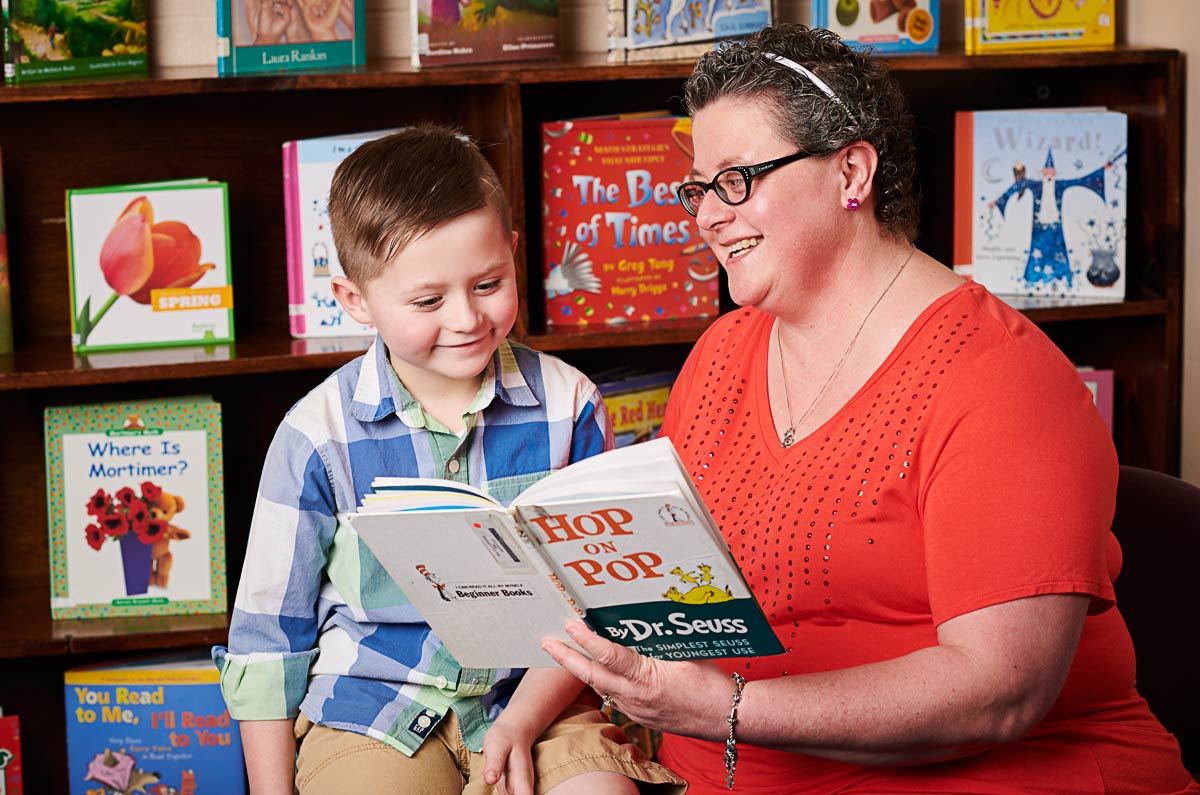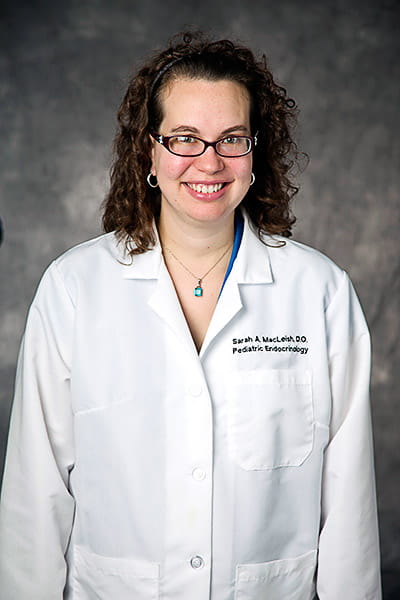Empowering Families to Control Type 1 Diabetes
April 01, 2018
 University Hospitals Rainbow Babies & Children'sExperts in Children's Health
University Hospitals Rainbow Babies & Children'sExperts in Children's Health

At first, the signs were subtle. Two years ago, Braydan Knarr, now 6, seemed like he was always thirsty and going to the bathroom often. “It was the summertime and he was playing outside and running around a lot, so it didn’t seem that strange that he was drinking more and peeing more,” says his grandmother, Mendy McIntyre. But it started getting progressively worse.
Braydan’s mother, Allisan, took him to his pediatrician. Since frequent urination can be a sign of Type 1 diabetes, his doctor checked his blood sugar (also known as glucose) levels and found they were sky-high. His doctor sent them to the emergency room at UH Rainbow Babies & Children’s Hospital.
Comprehensive Education and Support

Braydan was diagnosed with Type 1 diabetes and admitted to the hospital right away. He stayed for four days. “I’m still in awe of the staff and the doctors there,” Ms. McIntyre says. “The support, training and education about Type 1 diabetes and caring for Braydan was incredible. They put Braydan in the hospital to get his blood sugar under control, but we were also there to learn how to take care of him.” During his stay, they met with doctors, nurses, dietitians, certified diabetes educators, social workers, psychologists and others who equipped them with everything they needed to know about managing Type 1 diabetes.
With Type 1 diabetes, the body doesn’t produce insulin, the hormone needed to move glucose from the bloodstream into the body’s cells. As a result, patients have to check their blood sugar throughout the day and take insulin to keep glucose levels within a healthy range.
“When we learned that Braydan had Type 1 diabetes, our world flipped upside down,” Ms. McIntyre says. “We were completely overwhelmed. But by the time we left the hospital, we felt like we had the information and skills needed to take care of our little guy.”
Constant Monitoring for Peace of Mind

After Braydan was discharged from the hospital, he started seeing pediatric endocrinologists at UH Medina Health Center Rainbow Specialty Clinic. They told his family about an opportunity to enroll in a clinical trial designed to test the effectiveness of continuous glucose monitoring (CGM) in young children. The trial would offer additional education, support and guidance for families to help them use CGM to its full capabilities.
“With CGM, a little wire is placed under the skin that continuously measures glucose levels. It also transmits the reading to a receiver that the patient carries or sends to a parent’s phone that sets off an alarm when the patient’s blood sugar is too high or too low,” says Sarah MacLeish, DO, a Pediatric Endocrinologist and lead study investigator of the clinical trial. UH Rainbow Babies & Children’s Hospital was one of only a few centers nationwide selected to conduct the study. Braydan’s family decided to participate.
“At only 6 years old, he doesn’t really feel when his blood sugar starts to get high or low,” Ms. McIntyre says. “The CGM gives us peace of mind because it tells us so we can treat it right away.”
Braydan also receives ongoing care from the UH Rainbow team of pediatric endocrinologists, certified diabetes educators, nurses, dietitians and others. “We spend a lot of time with families during appointments and also do a lot of managing over the phone, answering their questions,” says Jamie Wood, MD, Medical Director of the Pediatric Diabetes Program at UH Rainbow Babies & Children’s.
Making it Work
Braydan currently checks his own blood sugar levels and needs insulin about five times per day, along with a long-acting dose before bed. His diabetes is well-controlled. The kindergartner loves playing basketball, football and baseball.
“That’s our goal for every patient,” Dr. MacLeish says. “It isn’t about making their lives fit into diabetes. We strive to adjust their care and treatment regimen so it fits into their lifestyle and they can do whatever they want to do.”
Know the Signs
Second only to asthma, Type 1 diabetes is the most common chronic childhood disease.
“It’s important to know the early warning signs of Type 1 diabetes so a child can get treated right away, and potentially avoid hospitalization,” says Dr. Wood. The signs include:
- Increased thirst
- Increased urination
- Increased hunger
- Weight loss
- Bed-wetting
- Yeast infections
Related Links
Children’s Diabetes Center at UH Rainbow Babies & Children’s


